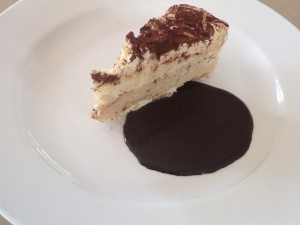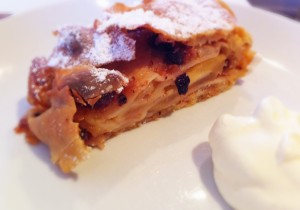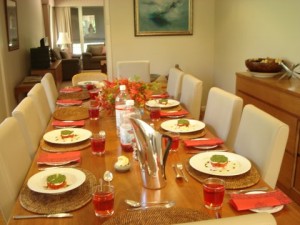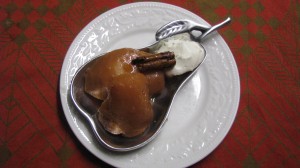My paternal grandmother was born in Scotland, just outside Edinburgh. When she met my grandfather she was running the dairy in a stately home. As kids my Dad was always telling us that his mother could make butter into the shape of swans. My mother would roll her eyes and say if he wanted swans made of butter he’d better go back!
Jessie was a wonderful cook but she died when I was 12, a year after I started to take an interest in cooking, so she didn’t have time to teach me many tricks. She kept chickens and sold the eggs, so after my grandfather died I used to go and help her to clean them and put them in boxes. She taught me to make pastry, fruit pies, Yorkshire puddings and gravy. And a rule I have never forgotten – always put a good pinch of salt into anything sweet (such as cakes) and a good pinch of sugar into anything savoury (such as gravy) because it brings out the flavours. Jessie insisted that the success of a good gravy or white sauce depended on the way you held your mouth, pronounced “mooth”, with her soft Scottish brogue. She was what you would call a dour Scot, so I never really knew when she was joking.
Greengrocer’s in the UK sell two kinds of apples – eating apples and cooking apples. Here in Australia I have never seen cooking apples for sale commercially, except at an orchard outside Canberra in Pialligo, where they sell them for about 3 weeks in the short picking season which starts late January. For the rest of the year we have to make do with Granny Smiths, which are really not the same. The most popular cooking apple in England is the Bramley – a large lumpy fruit which makes a deliciously fluffy apple sauce to go with pork or a tangy apple pie. About two years ago Jonathan Banks at the apple farm in Pialligo grafted a Bramley for us to plant on our rural property near Braidwood. I can’t wait for it to bear fruit.
My first apple and blackberry pie was made under the watchful eye of Jessie. When her three sons were growing up she said they could eat one whole pie each. I thought this was a bit of an exaggeration, but my Dad confirmed it was true. I don’t make fruit pies very often these days, but whenever I do I’m transported back to that cozy kitchen with its wood-fired Aga stove and Nana standing watching me, holding herself up on wooden crutches. She was very tall, had undergone two unsuccessful hip operations and had a lot of difficulty getting her large frame from A to B.
The pastry I use for fruit pies is the one Jessie taught me. It uses self-raising instead of plain flour and a mixture of lard and butter. It’s not sweet, but it’s the way I like it, contrasting nicely with the filling.
Apple and Blackberry Pie
Filling: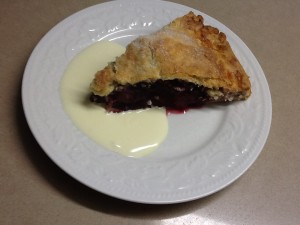
1 kg cooking apples or Granny Smiths, peeled, cored and sliced
1/4 cup sugar, or to taste
1/4 cup water
2 cups blackberries (fresh or frozen, thawed)
Pastry:
250g self-raising flour
75g lard
75g butter
3-4 Tbs cold water
To glaze:
A little milk or a beaten egg
Grantulated sugar
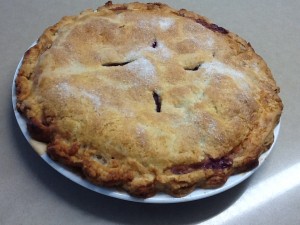
Place apples, water and sugar in a large saucepan. Cook for 10 minutes or so until softening. As Granny Smiths tend to hold their shape more than cooking apples I usually break them up a bit at this stage with a potato masher. Remove from heat and add the blackberries.
Preheat oven to 180°C. Place flour, lard and butter in food processor. Process to crumbs then add water gradually through the feed chute, with the motor running. When mixture starts to form a ball stop adding water and stop the motor, tip out the pastry and form into a ball. Cut pastry in half. Roll out one half on a floured surface into a circle slightly larger than a 25-30cm pie dish or dinner plate which is not too flat – mine is 28cm. Trim off excess. Fill with apple and blackberry mixture, leaving any excess juice behind. Mop up any excess on the pastry edges with paper towels. Roll out remaining pastry to cover the fruit, trim off excess then seal and crimp the edges. Cut four holes in the pastry lid to allow steam to escape. Brush surface with milk or beaten egg and sprinkle with granulated sugar. Bake for 35-40 mins or until nicely browned. Serve warm with cream or vanilla ice cream. Keeps for several days in the fridge, then just reheat in the oven to serve.
Serves 12
Variation: use raspberries instead of blackberries or make the pie with just apples, in which case increase the quantity to about 1½ kg.
Note: It’s not a good idea to use your best dinner plates for fruit pies. Use old ones or acquire a couple at a secondhand shop.

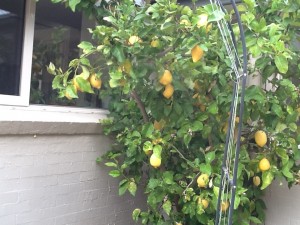 Asked to bring a plate to a Melbourne Cup buffet lunch I decided to make an old English favourite, Lemon Meringue Pie. As you can see, the lemon tree outside our kitchen window is laden with fruit. Last year we picked all the lemons and put them in a second fridge we keep in the garage for drinks. After a few weeks they started to go off, so this year we’ve decided to leave them on the tree and pick them as we need them. Not sure if this will affect next season’s crop, but we’ll find out.
Asked to bring a plate to a Melbourne Cup buffet lunch I decided to make an old English favourite, Lemon Meringue Pie. As you can see, the lemon tree outside our kitchen window is laden with fruit. Last year we picked all the lemons and put them in a second fridge we keep in the garage for drinks. After a few weeks they started to go off, so this year we’ve decided to leave them on the tree and pick them as we need them. Not sure if this will affect next season’s crop, but we’ll find out.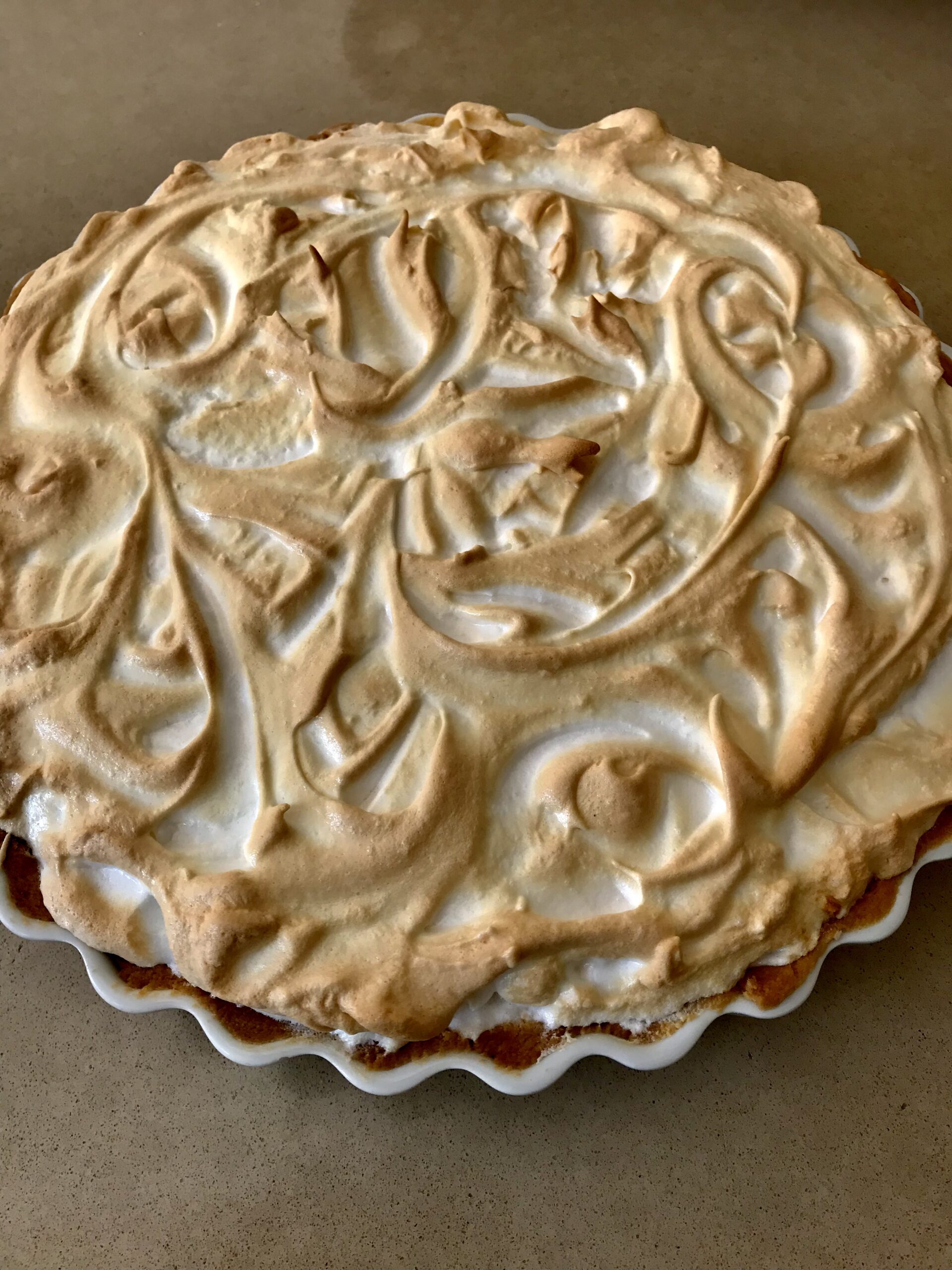
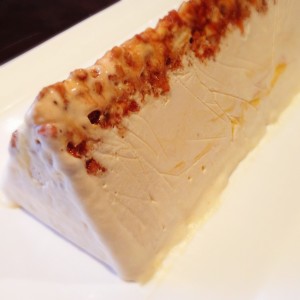
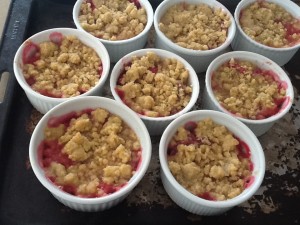
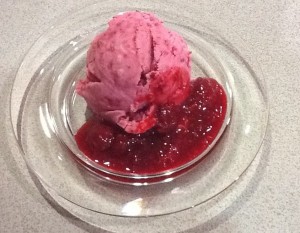
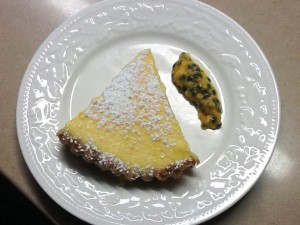 Sweet shortcrust pastry:
Sweet shortcrust pastry: